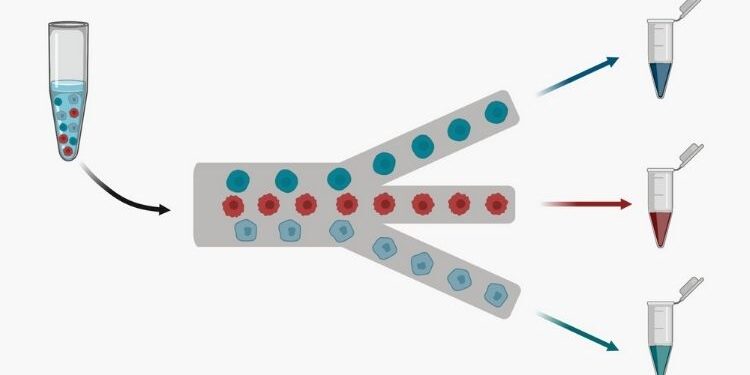As we all know, the cell is the fundamental unit of biological organisms. However, cell biology is much more complex than it seems. There is clear synchrony in cellular systems, however, during cell division and differentiation, the examined single-cell results show that the same cell line or tissue can present different epigenomes, genomes, and transcriptomes.
For example, a developing embryo or tumor has intricate structures. However, these complex structures also consist of numerous types of cells or a heterogeneous mixture of cells that can be spatially separated or isolated. This technique is commonly referred to as cell isolation or cell sorting.
Today many companies like thermogenesis.com have transformed the intricate stem cell separation and isolation techniques, and now it can be easily done in modern laboratories.
So, the isolation of exclusive cell types will now give researchers and scientists the ability to study each cell’s specific functions and roles. It will be highly beneficial to diagnostics, biomedical, and biotechnological applications, and this technique will become essential for further analysis.
There are many different techniques to separate and isolate cells from complex biological samples. These methods are commonly based on the characteristics of the targeted cells, such as size, density, electric charge, shape, or surface protein expression.
Here are the different methods of effective cell separation & isolation techniques:
1. Immunomagnetic Cell Separation
Immunomagnetic cell separation, also referred to as Magnetic cell separation, is a technique in which magnetic particles are used to target specific cells from heterogeneous mixtures. These magnetic cells or beads are bound to particular cell surface proteins with the help of antibodies, enzymes, lectins, or streptavidin.
Later, this sample is placed in an electromagnetic field. Here, only the magnetic particles get pulled by the effect, which also brings the labeled cells with them. Nowadays, magnetic cell separation is one of the most commonly used techniques.
In the magnetic cell isolation method, both positive and negative selections can be made. It also has several advantages, such as many cells can be isolated at once. So, the process is associated with high purity, high cell viability, and low equipment cost.
2. Fluorescence-activated Cell Sorting (FACS)
Fluorescence-activated cell sorting (FACS) is another effective method that is used to sort single cells based on intracellular markers. It involves the use of flow cytometry and fluorescent probes to label the target cells and later the sample is run through a flow cytometer device. Finally, cells are identified and separated one by one based on the color of their markers into isolated cell populations.
Compared to magnetic cell sorting, FACS has several advantages, such as the ability to separate single cells, sort complex cell types with multiple markers at a higher purity, and isolate cells based on surface marker expression levels.
3. Immunodensity Cell Separation
Immunodensity cell separation is also known as erythrocyte rosetting. In this method, a combination of antibody-based labeling and density gradient centrifugation is used to separate cells from the heterogeneous mixtures.
Here, antibodies are added to a blood sample and then the unwanted cells are labeled. Finally, these cells are cross-linked to red blood cells. During the centrifugation process, the unwanted cells pellet with the red blood cells, and all the target cells will remain in a layer above the density medium.
4. Buoyancy-Activated Cell Sorting (BACS)
Buoyancy activated cell sorting (BACS) is another effective cell separation technique that involves sorting the targeted cells with buoyant microbubbles. Later they are mixed with the sample, and due to the augmented buoyancy force, the target cells float on the surface of the solution.
Now through vacuum aspiration, they can be easily removed from the sample. Microbubbles are also used for the depletion of RBCs.
5. Sedimentation
The last cell separation technique is sedimentation. It involves the same properties as filtration and centrifugation. In sedimentation, gravity will help larger and denser components sediment faster than the ones that are smaller and less dense.
Due to the high sedimentation rate of the largest and densest components, they can be pelleted through low-force centrifugation in a sample. At last, the larger materials will move toward the exterior of the sample, and the cells which are left in the sample can easily be collected.
For example, Leukocytes are generally separated from erythrocytes through the dextran sedimentation method. Sedimentation is inexpensive compared to other methods; however, it results in lower overall purity.
Conclusion
Cell separation and isolation have many applications within life science research. It allows scientists to learn more about cells by conducting molecular analysis of a single cell type and genetically modifying and expanding a particular cell type. Companies like Thermogenes is offer these advanced technologies, which provide advantages of maximum yield with minimal contamination.
